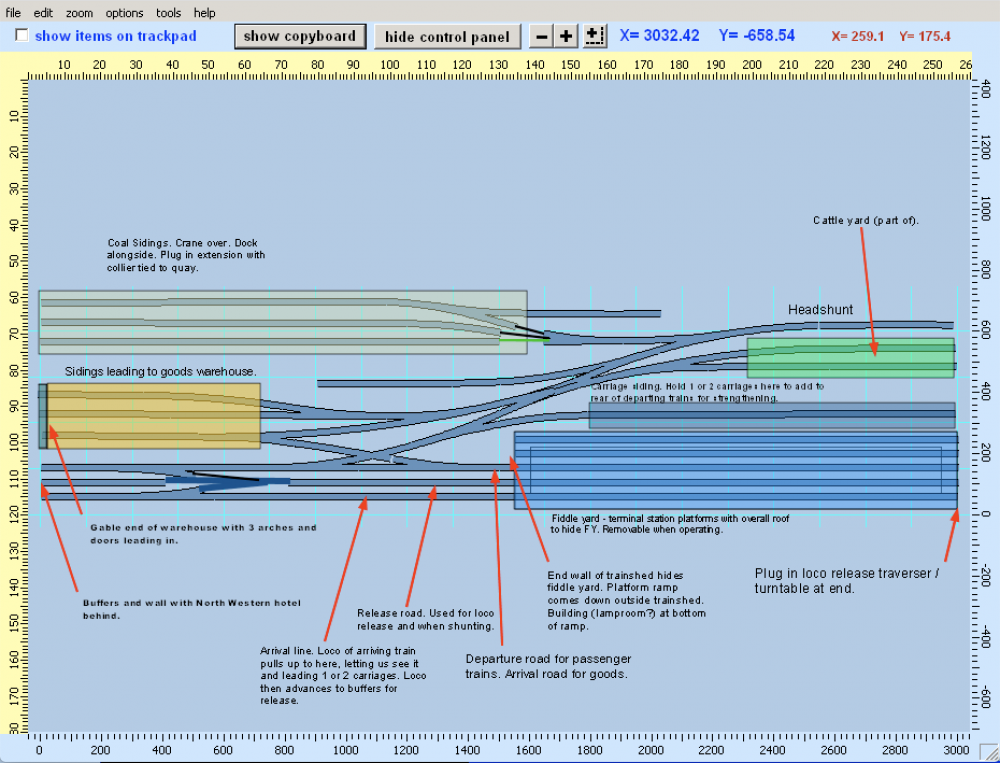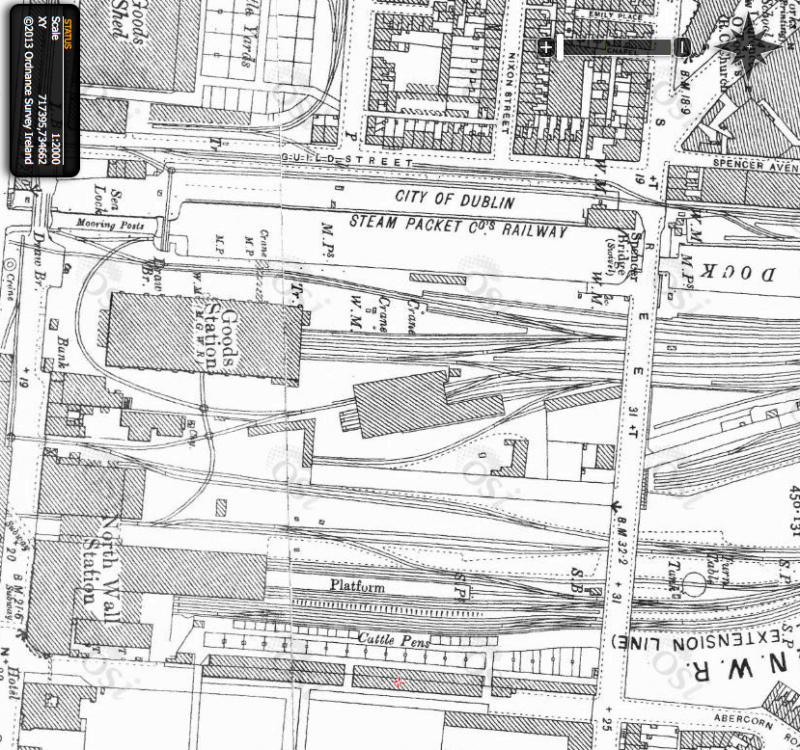
islandbridgejct
Members-
Posts
212 -
Joined
-
Last visited
Recent Profile Visitors
The recent visitors block is disabled and is not being shown to other users.
islandbridgejct's Achievements
-
Here's a link to Brian Harrap's very easy way of making crossing Vs: https://www.rmweb.co.uk/topic/38591-quai87/page/43/#findComment-5278749 It worked for me. (Now, if only I could get around to doing some.)
-
This looks interesting. I'll come back when you have some more done. Alan
-
Somewhat off topic here, but I have been wasting far too much time recently looking at your brilliant photos of Haltwhistle, Alton, Brompton, and railways in north east England that I had never paid any attention to or even heard about, like the Stanhope and Tyne, and the Westoe Colliery railway, as well as a great Scottish journey from Wick to Aberdeen. Fantastic stuff, and thanks for broadening my horizons. I travelled from Carlisle to Newcastle through Haltwhistle this Easter, and felt like we were cutting our way through the primordial rainforest - it was amazing to see pictures of it in the 1960s and 70s with tracks everywhere. Alan
-
Hello Bob. Just logged on after a prolonged absence and was delighted to see your thread on Ballycombe, having followed it before on that other forum, and then I was dismayed to learn of your health problems and recovery. So much in the space of a few pages. So I just wanted to wish you good health in your new home, and I look forward to following your modelling progress on these pages. I should be down at the show in Blackrock, but instead I'm stuck here down the road from it, working, for my sins. Alan (PS, And reading about model railways to avoid working.)
-
GSR & Early CIE Coaching Stock
islandbridgejct replied to DiveController's question in Questions & Answers
I have a Pender and Richards book from 1967 of GSWR carriage diagrams. It has drawings of all GSWR coaching stock in 1924 if that would add to your collection. Is there a separate book with the later carriages? -
A DART every 5 minutes?
islandbridgejct replied to islandbridgejct's question in Questions & Answers
Thank you for that. That's exactly what I was looking for. I remember seeing the original of that layout back in the day. The stock seems more authentic now. A nice restoration job. Alan -
I wonder does anyone have a copy of any of the DART promotional leaflets distributed in the late 70s / early 80s saying that, when complete, there would be a DART every 5 minutes at peak hour and every 15 minutes at other times? I remember the 5 minute claim well, and wish I had kept a copy so I could say, "you promised." If anyone could provide a scan of one, I'd be very grateful. Thanks, Alan
-
CIE Laminate Coaches - Worsley Works - ECMbuild in 4mm
islandbridgejct replied to murrayec's topic in Irish Models
That really is an excellent build. Little short of perfection. On interior colours, the seating is spot on. Going from memory, the seat headrests were black soft plastic / leatherette. There were two types of seat, the high backed ones in most carriages, including Cravens and Park Royals, and a shorter headrest in others - I think they were the laminates. Inner sides I seem to recall as dark brown wood pattern. Sliding doors at the carriage ends were varnished wood (I think). I can't remember the ends at all. Some of the Cravens had a criss cross grey pattern on the inner sides, and a beige fabric on the seats, but that wasn't used on the laminates or on anything else. This was for the period 1976 to 1984. John, I seem to have been following you around Dublin in the early 80s because on a visit to Inchicore I saw carriages being stripped and I remember being told it was to remove asbestos from them, but I can't remember whether they were laminates or Park Royals, and I can't remember were they being reskinned or was it just work on the interior. In fact, thinking back on it, I hope I wasn't on them. Alan -
I suppose the railway was running for miles anyway, so there was no need to build the station short, and building it narrow might require less land. Alan
-
A very interesting and informative build, John. Thanks for putting it up. I'm thinking about the CSB approach for my J26 if I ever get started, but it seems to me that if one axle gets compressed up, the next one must expand down, and the third one must then go into compression - the law of the lever, if my memory is right. I'm afraid I'd get a visit from the crew of the Enterprise (Scottie, not the GNR(I)) telling me I cannae break the laws of physics. I was wondering about non-continuous springy beams instead, but then I'd need to double up on the number of handrail knobs to hold the beams which might be hard to fit in. I suppose it works fine for the CLAG boys in practice, so no need to worry about it in theory. Good luck with the build, and please post as you go along. Alan
-
Very impressive. Inspirational modelling.
-
Can't better that. Thanks.
-
So I decided to return to an old idea, based on the North Wall. This is the North Wall: But the layout was too clean and logical for what I had in mind: And this is how I envisage the different bits looking: It's a partial layout, only 3m long, showing the very end of a station, with some pretty improbable track arrangements. A passenger train arriving will pull in on the lowest line and it's engine and lead carriage or two will emerge from the train shed that covers the fiddle yard. The engine will be released along the middle road, and then the carriages will be pulled away. The carriages will then be placed at the departure road, with the end 1 or 2 again appearing outside the trainshed. Meanwhile, a second passenger train can arrive, drop its load, release the engine and have the carriages taken away. They will move to the departure road after the first train has departed. Or I could have one road for the GSWR train and the other for the Midland or GNR. I might assume the LNWR got the mail contract from the City of Dublin Steam Packet. Meanwhile, goods will be handled through the improbable station, backed up, and then shunted into the different sidings. Obviously, in reality, the direct route down the outside behind the train shed would be used, but that wouldn't let me find out if I actually like shunting puzzle layouts. So that's where I'm at, at the moment. It may be a case of 'Mallow or bust', but for the moment I'll try to build something smaller, and to get practice with difficult and unlikely trackwork, all within a space that could go up in the spare room. It will also give me time to build up my stock, starting with that J26. * Phew. That took a bit longer than planned. Alan
-
I wanted to have a look at Headford, to see what sort of space it would take. It worked out at 10m, 9m if I set the fiddle yards at 1.5m max. (The two lines at the top are a long fiddle yard, accessed from a swinging sector plate, 1.5m, at either end. If I put scenery on the sector plate, I can get photos of trains disappearing into the distance, and only destroy the illusion of space when I swing the line to put a train on or off. The lines at bottom left are an imagined industry to hide the main line disappearing towards Mallow. The branch at bottom left is the line for Kenmare - fish specials off the branch, and tourists heading for Kenmare, Parknasilla and on to Glengariff.) Now, if I could persuade herself to let me set up for operating sessions in the sitting room and dining room, I could actually run to 9m and this would be fun to operate. Chances of that? Hmmm, yes. You might say that, alright. And if I had a 9m space, wouldn't that fit Mallow anyway? Time to draw up Mallow: Lengthwise, I've probably lost about 2 to 3m, but I can still fit an 8 coach train at the mainline platforms, which would keep me happy. Fiddle yards would only be 1.5m long, though, so I'd only be able to run 6 coach trains, but how bad. Anyway, I was clearly losing the run of myself.
-
So I thought I'd better see what would work. The learning curve on Templot is steep, and it's hard to figure out what way Martyn's mind works, and the instructions are a bit hit and miss, and it's harder still on a Mac where the keyboard shortcuts tend not to work. But then you begin to get the hang of it, and you start saying, 'ah, I see,' and it gets to be quite fun. This is Bantry: The problem is that the pier extends beyond the end of the station, adding 1 to 1.5m to the length, so I ended up at 6m without a fiddle yard. I thought about cutting it down, but decided to have a look at how something based on Baltimore would look: The fiddle yard is at bottom right with a straight run into the platform at bottom left. The sidings at the top left are an imaginary pier alongside what is in reality a very shallow inlet (from which we launched when kayaking to Clear Island and the Fastnet*.) The kick-back sidings on the top right are for operating interest and to hide the fiddle yard. They'd also keep my copper mining idea alive. All the turnouts are B6 minimum. (* Gratuitous boast. I was actually sick as a dog coming back.)
.png.c363cdf5c3fb7955cd92a55eb6dbbae0.png)









